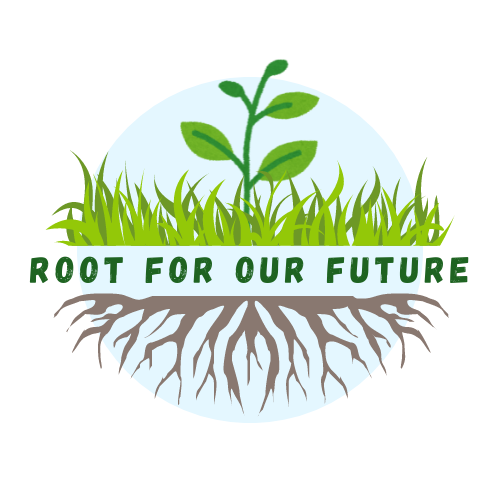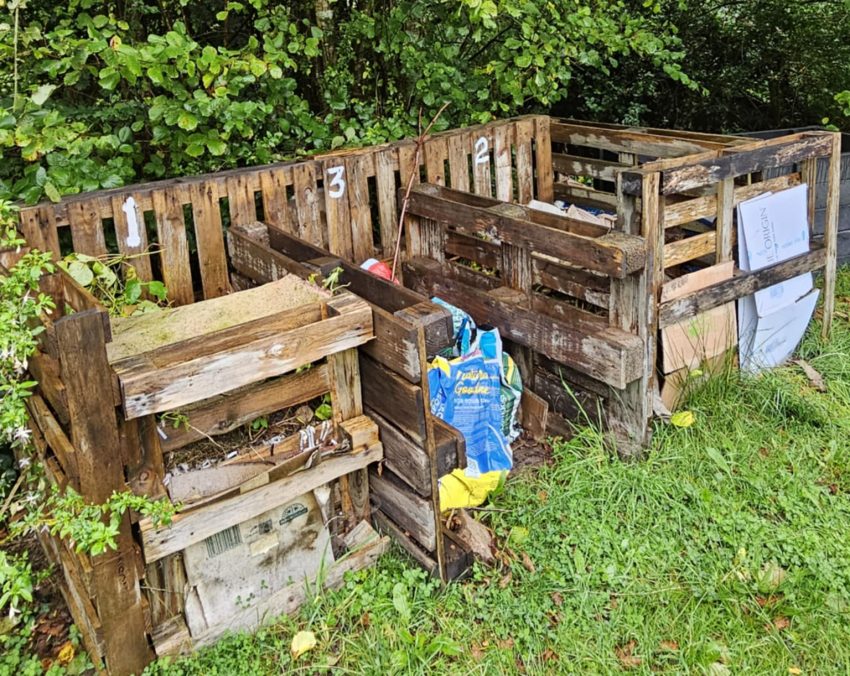Composting is one of the most natural, sustainable, and effective ways to recycle organic matter and enrich your soil. Climate Action Torfaen’s horticultural specialist, Tamara, recently hosted an inspiring composting workshop for local growers and gardeners.
The session explored the science and practice of composting, from the basics of what compost is to the different systems available for home and community use. Tamara shared practical advice, common pitfalls to avoid, and techniques for creating rich, fertile compost that supports healthy soils and sustainable food growing.
Below is a simple, no nonsense guide based on the workshop, capturing the key knowledge and tips so you can get started – or take your composting to the next level.
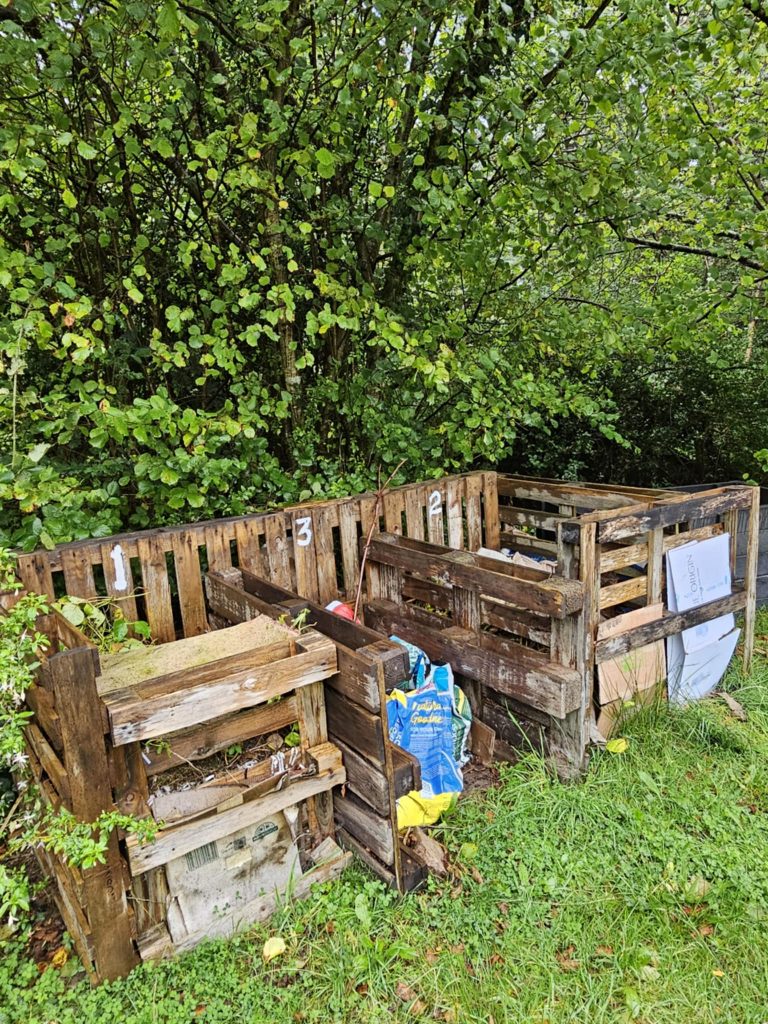
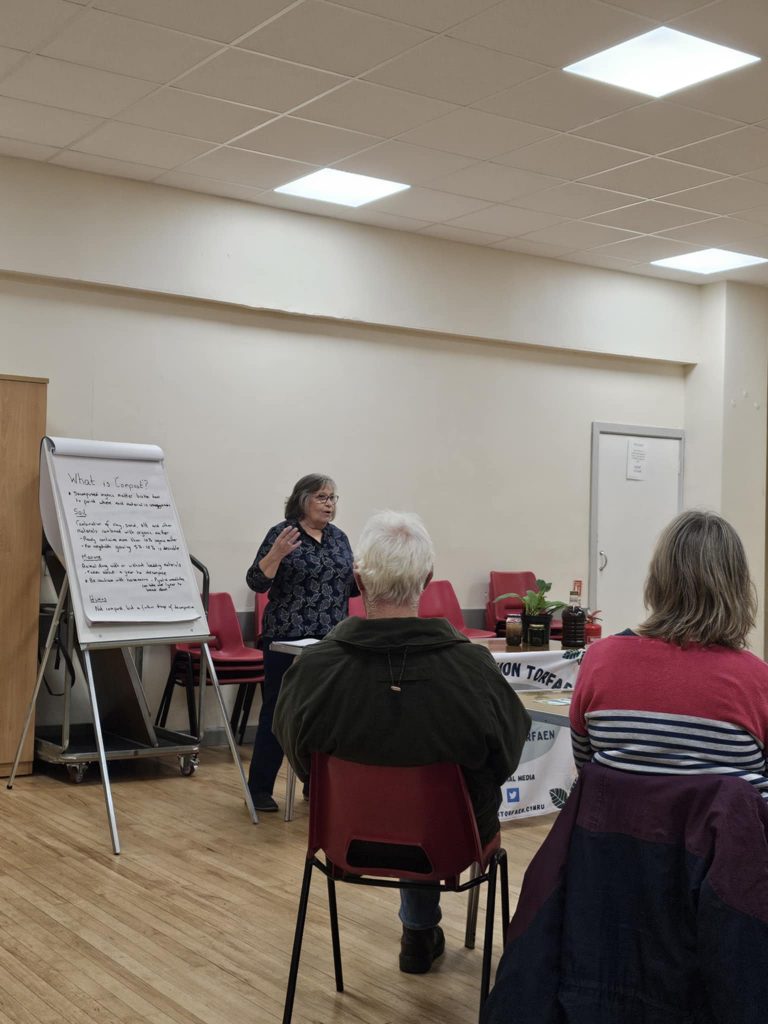
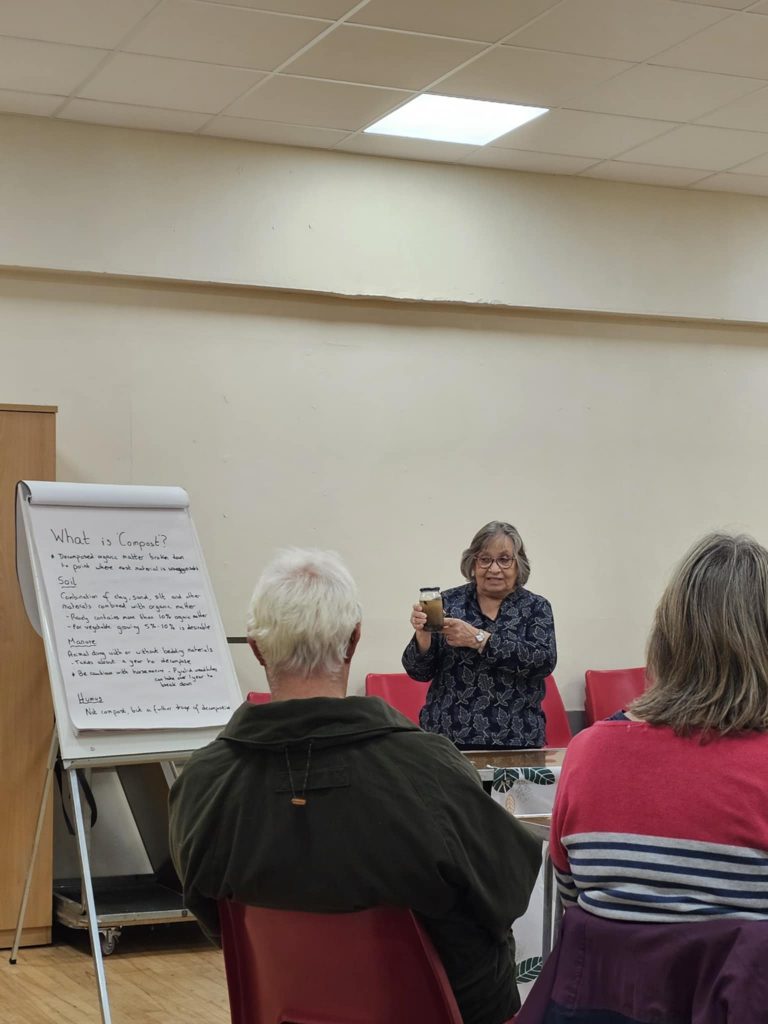
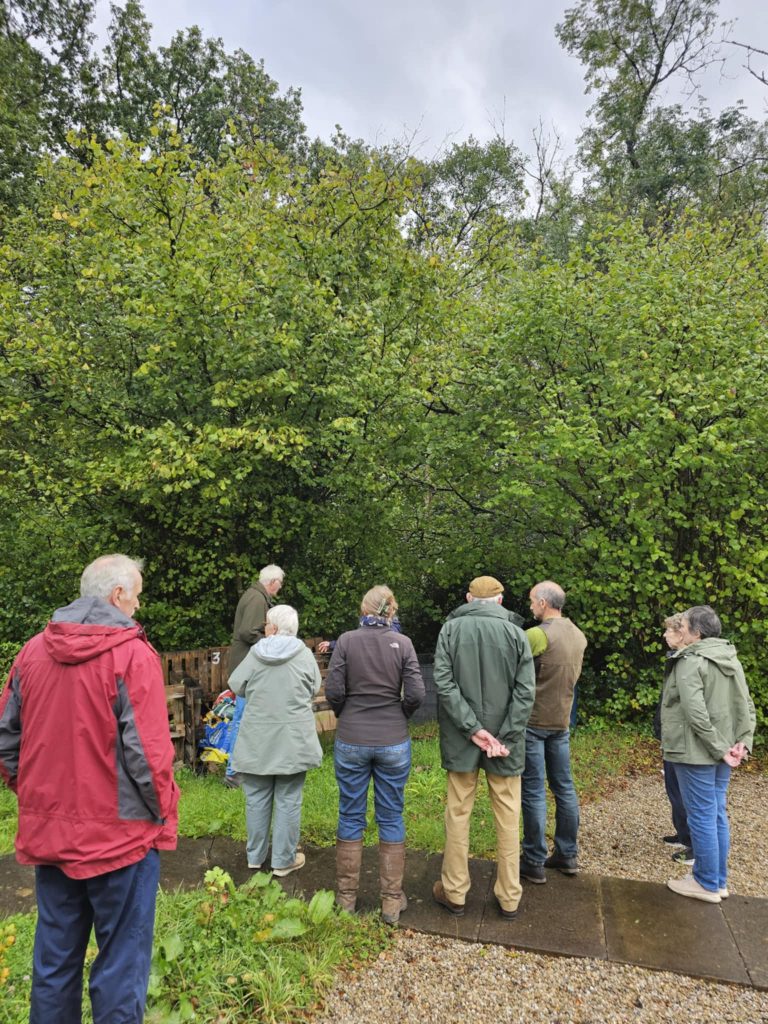
What is compost?
🪱 Compost is decomposed organic matter broken down until most material is unrecognisable.
🪱 Soil is a mixture of clay, sand, silt, minerals, and organic matter. For vegetable growing, 5–10% of organic matter is ideal.
🪱 Manure is animal dung with or without bedding material. It takes around a year to decompose. Be cautious with horse manure – Aminopyralid weed killers may take over a year to break down.
🪱Humus is not compost, but a further stage of decomposition, providing long-term fertility. There are questions around whether it actually exists…
Why use compost?
🌿 Mimics nature’s recycling system.
🦠 Microbes transform raw materials into complex organic compounds.
🌧️ Protects soil structure from winter rain damage when spread in autumn.
👍 Nutrients are less water-soluble than synthetic fertilisers, reducing nutrient leaching.
♻️ Recycles garden and kitchen waste.
⬆️ Boosts microbial activity and soil biodiversity.
🚫 Suppresses weed growth naturally.
Composting systems also empower self-reliance. By producing your own nutrient-rich soil amendments, you reduce dependence on supermarkets and garden centres that promote synthetic fertilisers and the idea that we “need” them. Instead, you create a circular system where your waste becomes your resource. This saves money, builds resilience, and reconnects us with natural cycles of fertility, offering independence from the chemical-driven food and gardening industry.
Principles of composting
A compost heap is a thriving ecosystem full of bacteria, fungi, worms, and micro-organisms. For them to thrive, they need:
- Food: Green (nitrogen-rich) and brown (carbon-rich) materials.
- Air: Essential for aerobic decomposition.
- Moisture: Prevents the heap from drying out.
Balance is key:
- Green materials feed bacteria.
- Brown materials feed fungi and help retain air pockets.
Signs your compost is working:
- Volume of heap reduces (material is being eaten).
- Heat is generated from microbial activity.
What can go wrong?
🦨💨 Smelly heap → Too wet or too many green materials (especially grass clippings). Solution: cover heap and add more brown materials.
⌛ Not heating up → Not a problem; decomposition will still happen, just slower. Adjust your green/brown ratio. Save brown materials to add when needed.
Compost ingredients
You want to use both green and brown materials when composting.
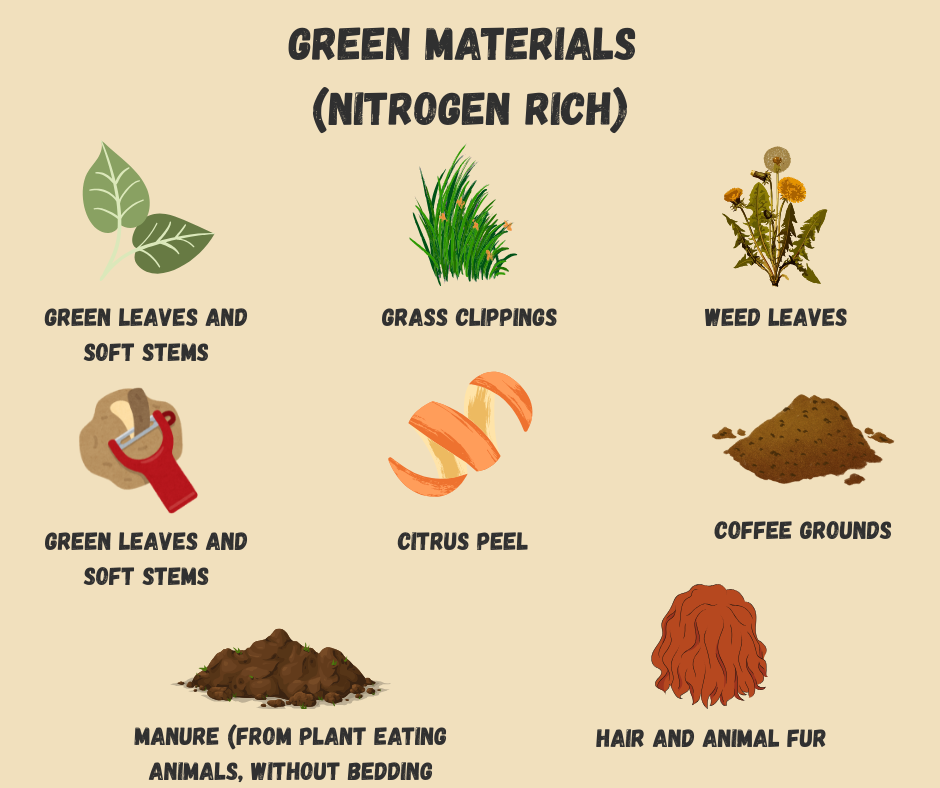
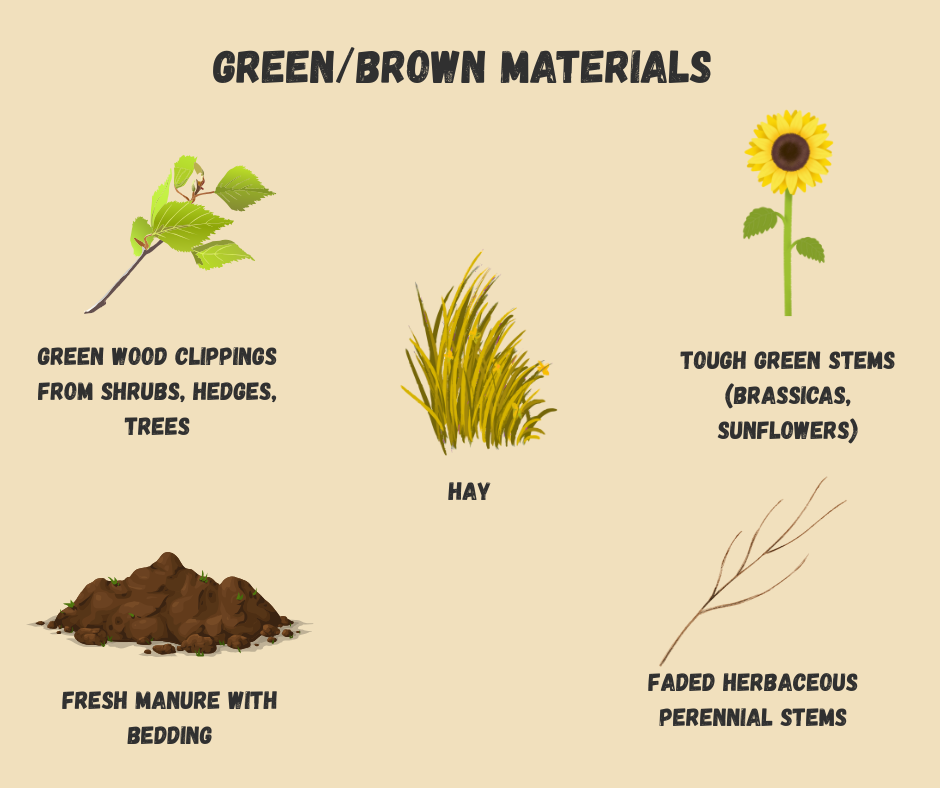
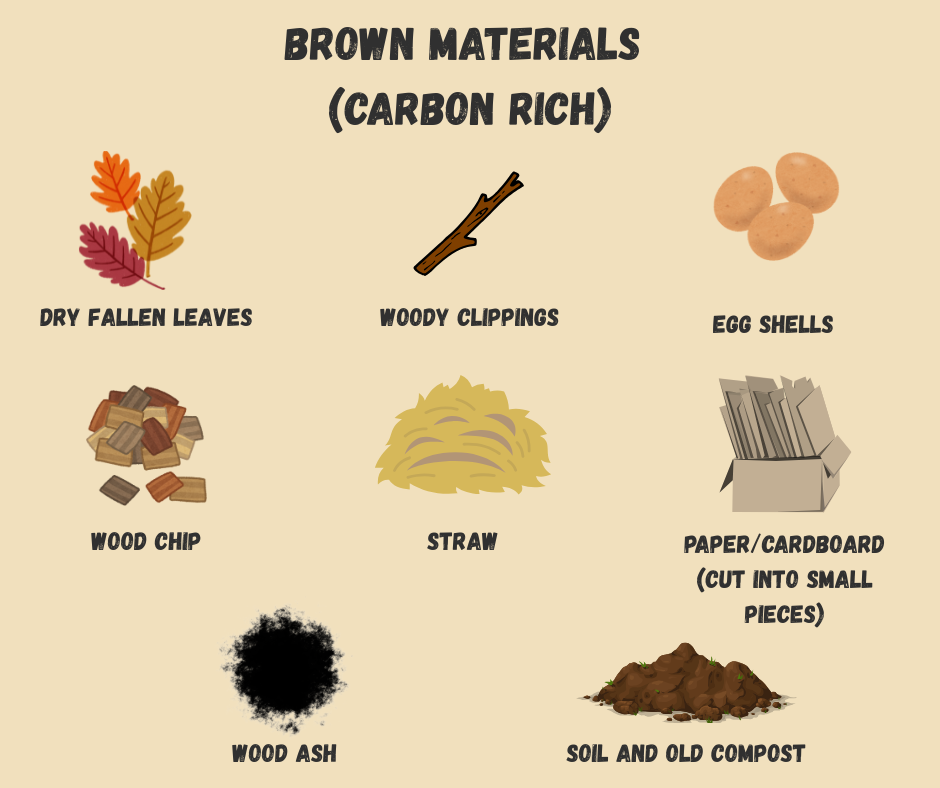
The ideal layering ratio is 5 cm green to 1.5 cm brown. This isn’t exact science, but a useful guideline.
Phases of a compost heap
1️⃣ Initial phase
- Heat builds, lasting several days to weeks.
- Can reach 40°C, (sometimes 55°C –70°C, hot enough to kill weed seeds).
- Regular green additions maintain microbial activity.
2️⃣ Cool phase
- Fungi feed on fibrous/woody materials.
- Turning the heap reintroduces oxygen and can warm it up again.
- Stop adding new material towards the end of the cool phase.
3️⃣ Maturing phase
- Other organisms (worms, woodlice, beetles) move in.
- Organic matter continues to break down into stable compost.
Types of compost systems
- Pallet bins – Best in groups of three for efficient rotation.
- Conical plastic bins (“daleks”) – Space-efficient for small gardens.
- Hot boxes – Super-insulated; require careful mixture management.
- Tumbler bins – Easy turning, faster results.
- Worm bins – Perfect for kitchen waste, producing worm castings.
🌟 A special shout out for Bokashi bins! 🌟
As part of out Root for Our Future project, we gifted our community friend, Fairhill Methodist Church two bokashi bins to super charge their composting efforts. But what are they?
Bokashi bins
- Originated in Korea, popularised in Japan.
- Uses fermentation (anaerobic process) to create a pre-composting conditioner.
- After 2 weeks, fermented matter can be added to a compost heap or directly buried in soil.
- Accepts all types of food waste including cooked food, meat, and bones.
- Uses an an occulated bran to begin the fermentation process.
- Also produces Bokashi tea, a nutrient-rich liquid feed.
- Learn more here: https://www.rhs.org.uk/garden-inspiration/get-gardening/bokashi
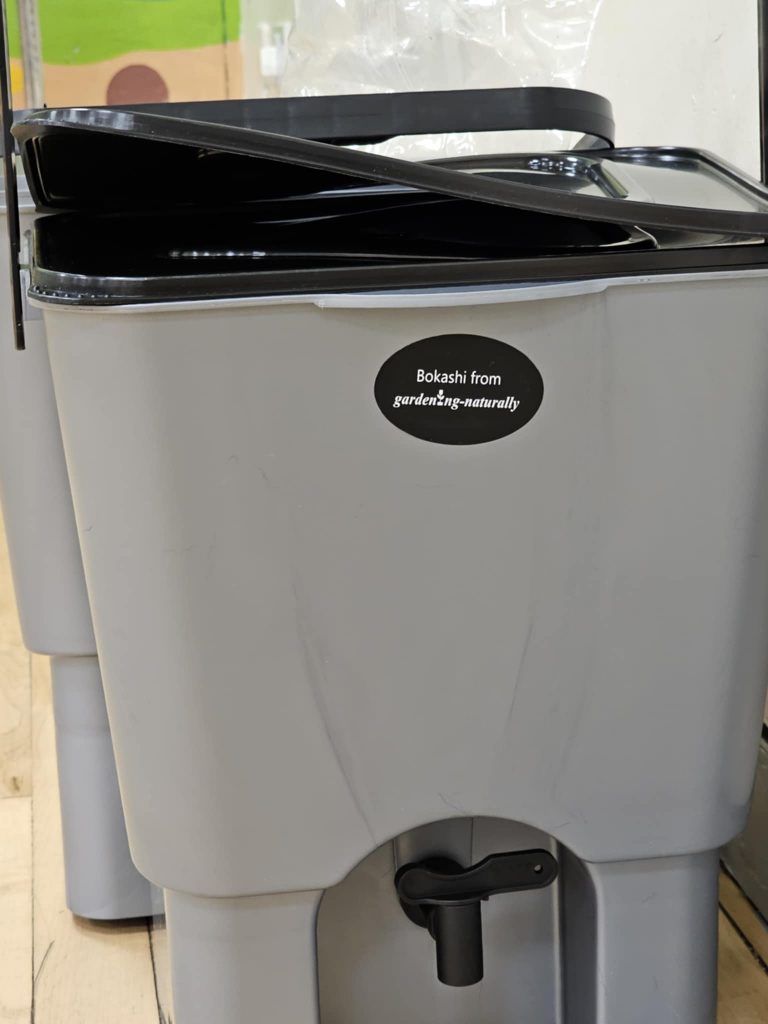

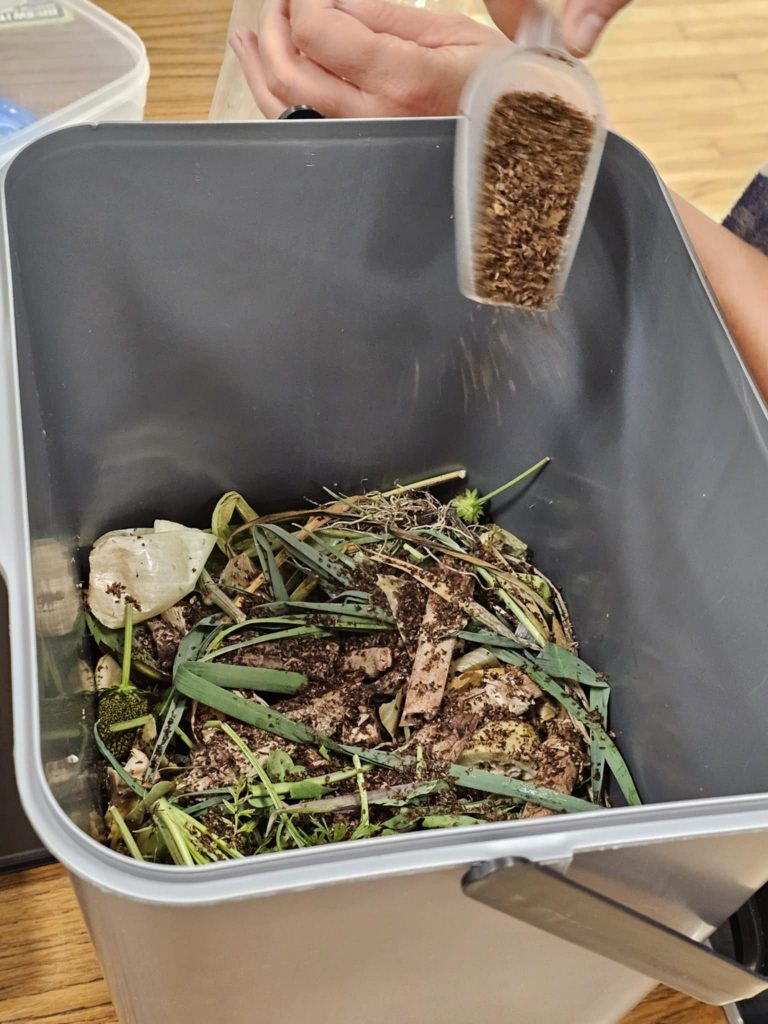
Compost boosters – Comfrey
🌿 Comfrey (Symphytum officinale) is an invaluable compost activator and natural fertiliser:
- Belongs to the Boraginaceae family.
- Name comes from Latin confervere – “to heal.”
- Traditionally called “knitbone” or “bone-set.”
- Best variety: Symphytum x uplandicum “Bocking 14” – a sterile hybrid that won’t self-seed.
- Deep roots (up to 2 m) pull nutrients from the subsoil.
- High in potassium but also contains nitrogen and phosphorus.
🌿 Uses:
- Add leaves to compost as an activator.
- Use as mulch.
- Make a liquid feed (fermented comfrey tea): https://www.gardenersworld.com/how-to/grow-plants/how-to-make-a-comfrey-feed/
Composting is both a science and an art. By understanding the balance of materials, the needs of microbes, and the natural decomposition cycle, you can transform garden and kitchen waste into nutrient-rich compost that supports healthier soil, stronger plants, and a more sustainable gardening practice. It’s a way to close the loop, live more independently, and nurture both your garden and the planet.
Root for Our Future
This event is part of Root for Our Future, a two-year project exploring food sustainability within Torfaen. Everyone is welcome to attend one of our events. They’re completely free! This project is funded by the National Lottery Community Fund.
